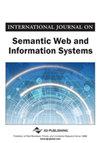Phishing Website Detection With Semantic Features Based on Machine Learning Classifiers: A Comparative Study
IF 4.1
4区 计算机科学
Q2 COMPUTER SCIENCE, ARTIFICIAL INTELLIGENCE
International Journal on Semantic Web and Information Systems
Pub Date : 2022-01-01
DOI:10.4018/ijswis.297032
引用次数: 34
Abstract
The phishing attack is one of the main cybersecurity threats in web phishing and spear phishing. Phishing websites continue to be a problem. One of the main contributions to our study was working and extracting the URL & Domain Identity feature, Abnormal Features, HTML and JavaScript Features, and Domain Features as semantic features to detect phishing websites, which makes the process of classification using those semantic features, more controllable and more effective. The current study used machine learning model algorithms to detect phishing websites, and comparisons were made. We have used 16 machine learning models adopted with 10 semantic features that represent the most effective features for the detection of phishing webpages extracted from two datasets. The GradientBoostingClassifier and RandomForestClassifier had the best accuracy based on the comparison results (i.e., about 97%). In contrast, GaussianNB and the stochastic gradient descent (SGD) classifier represent the lowest accuracy results; 84% and 81% respectively, in comparison with other classifiers.基于机器学习分类器的语义特征网络钓鱼网站检测:比较研究
网络钓鱼攻击是网络钓鱼和鱼叉式网络钓鱼的主要网络安全威胁之一。网络钓鱼网站仍然是一个问题。本研究的主要贡献之一是将URL和Domain Identity特征、Abnormal特征、HTML和JavaScript特征以及Domain特征提取为语义特征来检测钓鱼网站,使使用这些语义特征进行分类的过程更加可控和有效。目前的研究使用机器学习模型算法来检测钓鱼网站,并进行了比较。我们使用了16个机器学习模型,采用了10个语义特征,这些特征代表了从两个数据集中提取的最有效的网络钓鱼网页检测特征。从比较结果来看,GradientBoostingClassifier和RandomForestClassifier的准确率最高(约为97%)。相比之下,GaussianNB和随机梯度下降(SGD)分类器的准确率最低;与其他分类器相比,分别为84%和81%。
本文章由计算机程序翻译,如有差异,请以英文原文为准。
求助全文
约1分钟内获得全文
求助全文
来源期刊
CiteScore
6.20
自引率
12.50%
发文量
51
审稿时长
20 months
期刊介绍:
The International Journal on Semantic Web and Information Systems (IJSWIS) promotes a knowledge transfer channel where academics, practitioners, and researchers can discuss, analyze, criticize, synthesize, communicate, elaborate, and simplify the more-than-promising technology of the semantic Web in the context of information systems. The journal aims to establish value-adding knowledge transfer and personal development channels in three distinctive areas: academia, industry, and government.

 求助内容:
求助内容: 应助结果提醒方式:
应助结果提醒方式:


